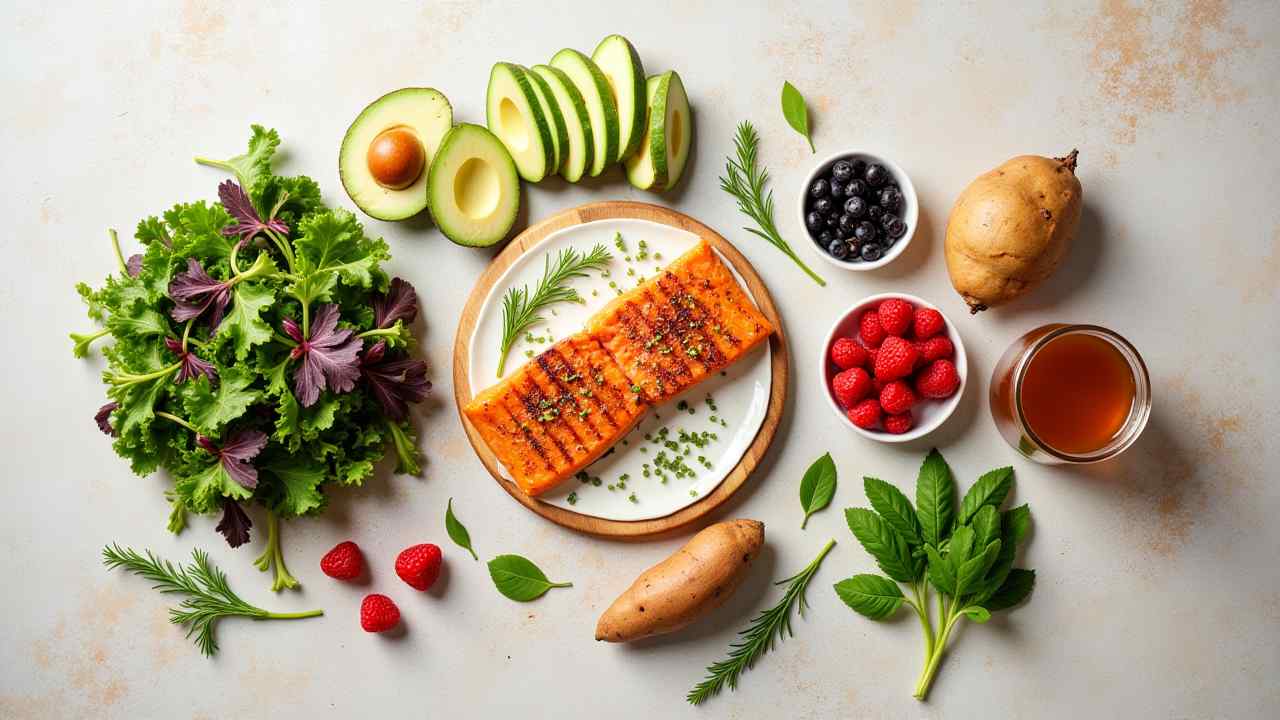
🌿 The Autoimmune Diet (AIP): A Complete Guide and Food List
🌿 A Guide to the Autoimmune Diet: Can Food Help Heal Your Body? 🌿
An autoimmune disease occurs when the body's immune system mistakenly attacks its own tissues. This can lead to chronic inflammation and a wide range of symptoms. Diet can play a powerful role in managing these conditions.
The autoimmune diet, known as the Autoimmune Protocol (AIP), is a specialized elimination diet. It is designed to reduce inflammation in the body. The main goal is to identify foods that may trigger your symptoms.
This guide will walk you through the AIP diet. We will cover how it works and what to eat. It is a powerful tool for taking control of your health. Let's explore this healing journey together. 💪
🤔 How Does the Autoimmune Diet (AIP) Work?
The AIP diet is based on the theory of intestinal permeability, or "leaky gut." This theory suggests that small gaps in the gut lining allow particles to enter the bloodstream. This can trigger an immune response and inflammation.
The autoimmune diet works in two distinct phases. It first removes all potential food triggers. Then, it carefully reintroduces them. This process helps you create a personalized diet for your body.
What Is the Elimination Phase?
This is the strictest phase of the AIP diet. You will remove a long list of foods. This phase typically lasts for 30 to 90 days. The goal is to calm the immune system completely.
During this time, you focus on eating nutrient-dense foods. These foods help heal the gut lining. Many people start to notice a significant reduction in their symptoms during this phase.
What Is the Reintroduction Phase?
Once you feel better, you begin reintroductions. This is a slow and methodical process. You reintroduce one food at a time. This allows you to see how your body reacts to it.
This phase is crucial for long-term success. It helps you identify your specific trigger foods. The goal is to have the most varied and least restrictive diet that keeps you feeling well.
🚫 What Foods Must You Avoid on the AIP Diet?
The elimination list for the autoimmune diet is extensive. It removes all common inflammatory and allergenic foods. Being strict during this phase is key to its success.
Which Grains and Legumes are Excluded?
All grains are removed. This includes wheat, rice, corn, and oats. All legumes are also excluded. This means no beans, lentils, peanuts, or soy. These foods can be difficult to digest and may irritate the gut.
What About Dairy and Eggs?
Dairy and eggs are two of the most common food sensitivities. Therefore, they are both completely removed during the elimination phase. This includes milk, cheese, yogurt, and whole eggs.
Are Nightshade Vegetables Banned?
Yes, nightshade vegetables are temporarily eliminated. This group includes tomatoes, potatoes, peppers, and eggplant. They contain compounds called alkaloids that can be problematic for some people.
What Other Foods Are Out?
You must also avoid all nuts and seeds. Refined sugars and industrial seed oils are forbidden. Coffee and alcohol must also be removed. Many seed-based spices are also excluded during this phase.
✅ What Foods Can You Eat on the Autoimmune Diet?
While the list of foods to avoid is long, the list of foods to enjoy is vibrant and nourishing. The focus of the autoimmune diet is on healing foods. These foods are packed with nutrients.
What Are the Best Protein Sources?
Focus on high-quality animal proteins. Grass-fed meats, pasture-raised poultry, and wild-caught fish are excellent. Organ meats, like liver, are highly encouraged. They are incredibly rich in vitamins and minerals.
Which Vegetables Are Allowed?
You can eat a wide variety of vegetables. Leafy greens like spinach and kale are great. Cruciferous vegetables like broccoli and cauliflower are also included. Sweet potatoes and squash are good sources of carbs. 🥗
Can You Eat Healthy Fats?
Healthy fats are a cornerstone of the diet. Avocado, olive oil, and coconut oil are fantastic choices. Quality fats from animal sources are also important. These fats help reduce inflammation.
What About Fruits and Fermented Foods?
You can enjoy fruits in moderation. Focus on low-sugar options like berries. Fermented foods are also encouraged. Sauerkraut, kimchi, and kombucha can help improve your gut health.
⭐ How Do You Reintroduce Foods?
The reintroduction phase must be done carefully. Follow a structured process to get clear results. Introduce only one new food every 5-7 days.
Start with a very small amount of the food. Wait a few hours and see how you feel. If you feel fine, eat a larger portion. Then, monitor your symptoms for the next few days.
Pay attention to any changes in digestion, mood, skin, or energy levels. If you have a reaction, that food is likely a trigger for you. If you have no reaction, you can add it back to your diet.
❤️ Is the Autoimmune Diet Right for You?
The autoimmune diet is a significant commitment. It is highly restrictive and requires careful planning. However, it can be a life-changing tool for many people. It offers a path to understanding your body.
Remember, the elimination phase is not forever. It is a temporary diagnostic tool. The goal is to find a sustainable, long-term diet. This diet should nourish you and keep your symptoms at bay.
It is highly recommended to work with a doctor or registered dietitian. They can guide you through the process safely. The AIP diet is a powerful step in your health journey. It empowers you to find healing through food.